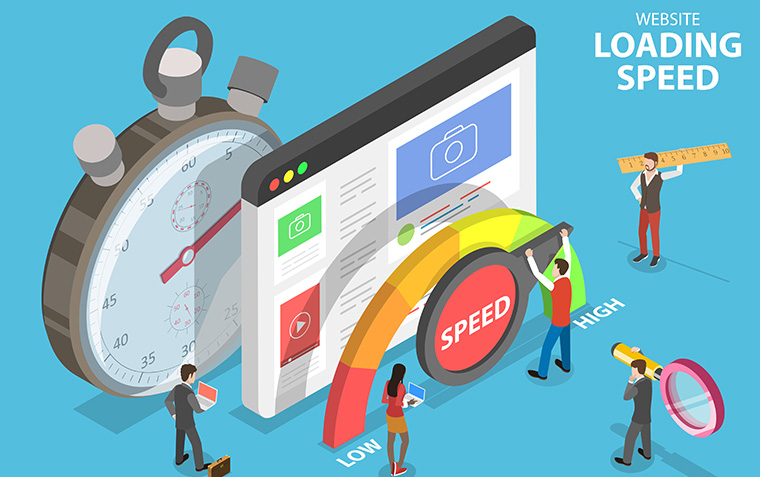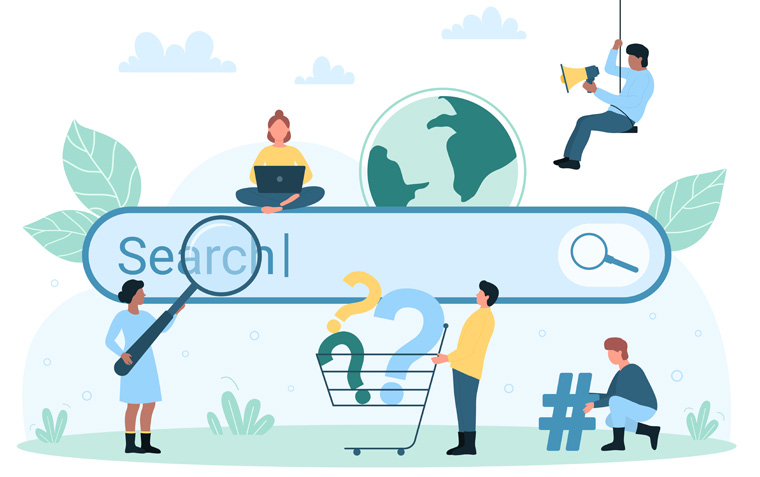The Impact of Page Speed on User Experience and SEO

In the fast-paced digital world, where information is just a click away, page speed has emerged as a critical factor influencing user experience (UX) and search engine optimisation (SEO). The importance of a swift, seamless browsing experience cannot be overstated. Here's why page load time matters and how it affects both users and search engines.
User Experience: The Need for Speed
When users visit a website, they expect it to load quickly. Between 0 and 2 seconds is ideal, with up to 4 seconds also being acceptable. Any longer than 4 seconds can significantly impact their experience and perception of the site. Here are some ways page speed affects UX:
1. First Impressions Matter
The loading time of a website is the first interaction users have with it. A fast-loading site creates a positive first impression, while a slow one can frustrate users and lead to a high bounce rate.
2. User Engagement
Faster websites enhance user engagement. When pages load swiftly, users are more likely to stay longer, explore more pages, and interact with the content. This leads to higher engagement metrics such as time on site, page views, and interaction rates.
3. Conversion Rates
Page speed directly influences conversion rates. An experiment by tech agency Portant discovered that website conversion rates for B2B sites that load in 1 second are 3x higher than a site that loads in 5 seconds, and 5x higher than sites that load in 10 seconds. For e-commerce websites, your conversion rate starts at 3.05% with a 1 second load and drops to 1.68% by 2 seconds.
4. Mobile Users
With the increasing use of mobile devices, page speed has become even more crucial. Mobile users often have slower internet connections, and a slow-loading mobile site can lead to a poor user experience, higher bounce rates, and lost potential customers.
SEO: Speed as a Ranking Factor
Search engines like Google prioritise user experience, and page speed is a key component of their ranking algorithms. Here’s how page speed affects SEO:
1. Search Engine Rankings
Google has been using page speed as a ranking factor for both desktop and mobile searches since 2018. Faster websites are more likely to rank higher in search results, increasing visibility and attracting more organic traffic.
2. Crawl Efficiency
Search engine bots crawl websites to index their content. Faster websites allow bots to crawl more pages in a given time, improving the chances of having more content indexed and ranked.
3. Reduced Bounce Rates
A study by Google found that slow websites lead to higher bounce rates. The difference between a 1 second load time and a 3 second bounce rate is a 32% increase, with a jump to 90% increase if the page load speed is 5 seconds. This can negatively impact SEO. When users leave a site quickly, it signals to search engines that the site may not be providing a good user experience, leading to lower rankings.
4. Core Web Vitals
Google’s Core Web Vitals, a set of metrics related to page speed and user interaction, have become a part of the ranking criteria. These include Largest Contentful Paint (LCP), Interaction to Next Paint (INP), and Cumulative Layout Shift (CLS). These measure loading performance, interactivity, and visual stability respectively. Meeting these metrics can improve both user experience and SEO performance.
Improving Page Speed
Given its importance, optimising page speed should be a priority for every website owner. Here are some strategies to enhance page speed:
1. Optimise Images
Large images can significantly slow down a website. Compressing images and using the correct format can reduce load times.
2. Minimise HTTP Requests
Reducing the number of elements on a page (such as scripts, images, and stylesheets) can decrease HTTP requests and speed up loading times.
3. Use Browser Caching
Enabling browser caching allows frequently accessed resources to be stored locally, reducing the need to reload them with each visit.
4. Optimise Code
Minifying CSS, JavaScript, and HTML can reduce file sizes and improve load times. Removing unnecessary code and leveraging asynchronous loading for scripts can also enhance performance.
Page speed is a vital aspect of both user experience and SEO. A fast-loading website not only encourages users to browse the site but also gains favour with search engines, leading to better rankings and increased traffic.





